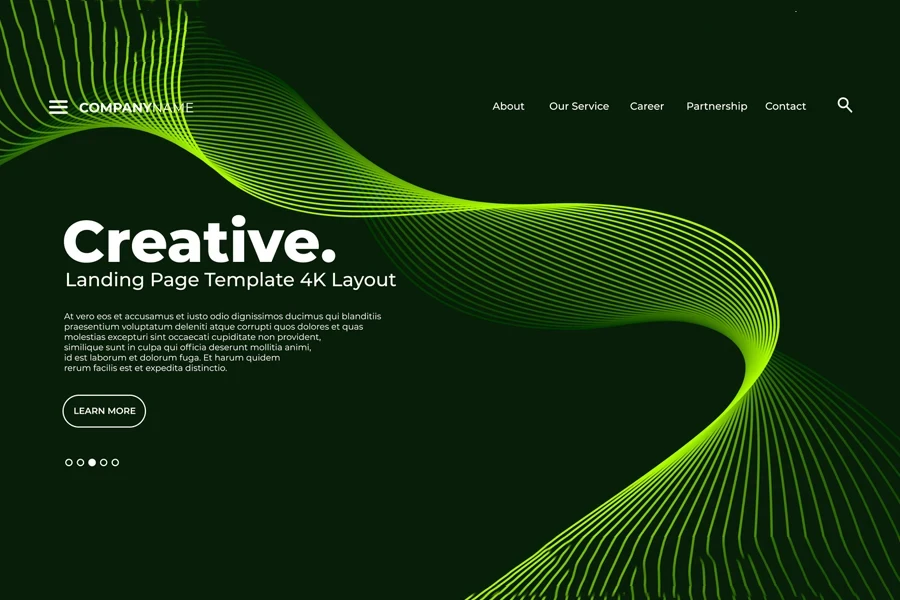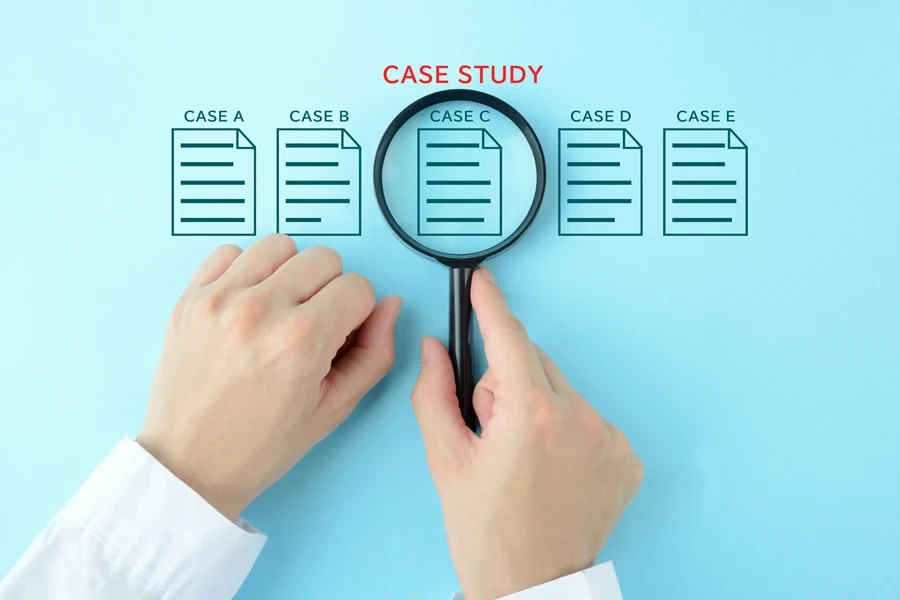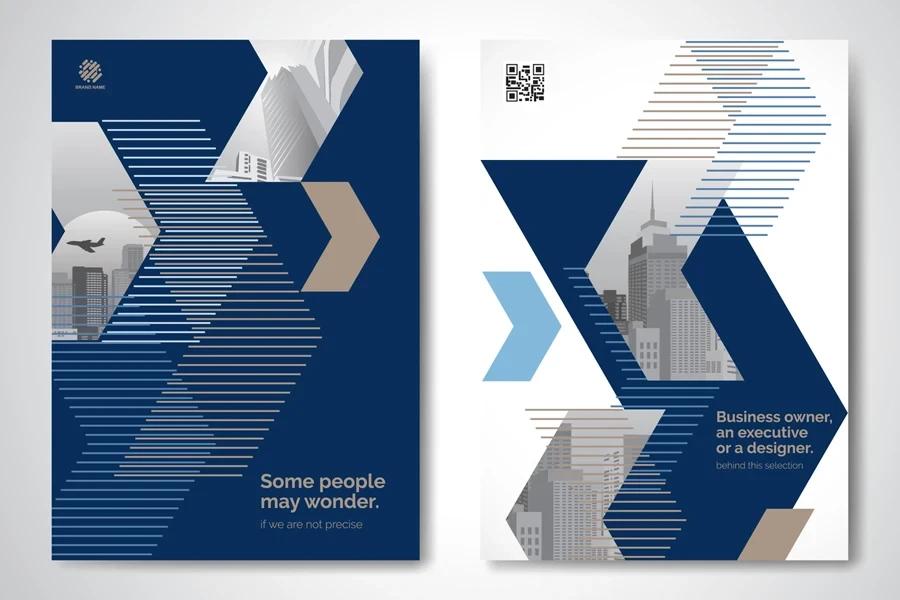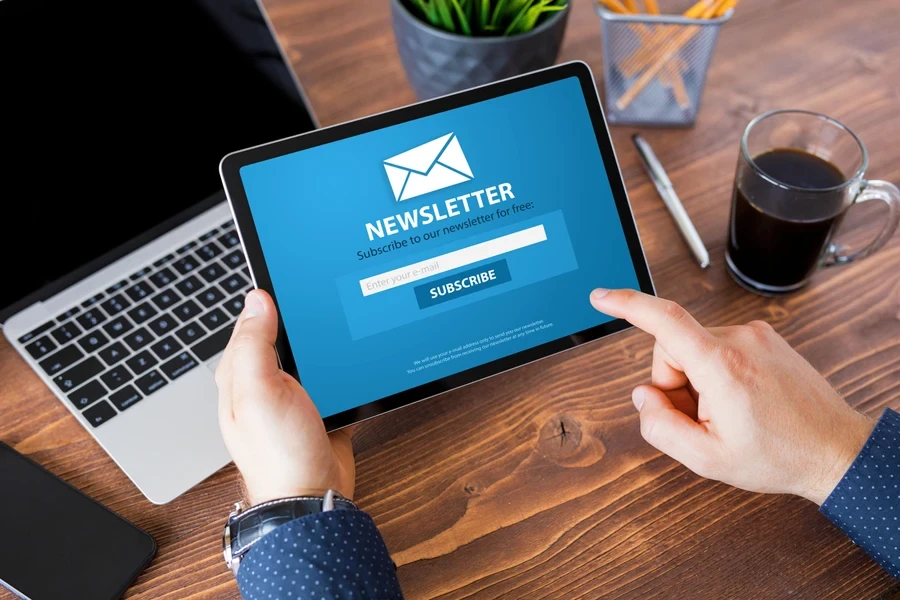Before businesses can convince potential consumers to buy their product or service, they must guide them through the buyer’s journey by providing the right content at each stage. Jumping straight into a hard sell is often ineffective, which is why marketing collaterals are often essential.
Businesses must always tailor their marketing materials for different audiences, whether their brand is well-known or not. This can generate leads, promote new products, re-engage existing customers, and increase their visibility.
This guide will cover the key types of marketing collateral businesses should use in their communication strategy and explain when and how to use each.
Table of Contents
What are marketing collaterals?
Types of marketing collaterals for the awareness stage
Types of marketing collaterals for the consideration stage
Types of marketing collaterals for the decision stage
Types of marketing collaterals for the loyalty stage
Bottom line
What are marketing collaterals?
Marketing collateral is any material businesses use to promote their products or services. These materials range from traditional print items like posters and flyers to digital content such as online catalogs and e-magazines. Essentially, it’s anything that helps communicate a brand’s message.
Today, online content like blogs, white papers, and digital reports are also part of this mix, as they can help boost marketing or promotion. Although marketing collaterals were once a big part of sales and customer-facing teams, they are now necessary for the entire business. Even HR departments now use branding materials to attract top talent.
Types of marketing collaterals for the awareness stage
At the awareness stage, marketing efforts should focus on helping potential customers understand their problems. They probably know something’s wrong but might not clearly understand what’s going wrong.
That’s where businesses come in. They should show potential customers they get it by offering content that speaks directly to their struggles, making them feel seen and understood. Here are a few types of marketing collateral that can introduce a brand and showcase its value to new audiences at this stage.
1. eBooks

eBooks are an awesome way to show off a brand’s expertise while providing real value to its audience. They’re more laid-back than white papers, which makes them perfect for the early stages of the customer journey. eBooks are also easy to read, super educational, and more approachable.
However, when businesses create an eBook, they must remember to keep it engaging. Since they tend to run long, toss in some visuals to break it up and ensure it’s easy to share on social media. A smart move? Gating the eBook by asking readers to share their contact info before downloading. Businesses will get valuable leads, while the users get helpful content. Everyone wins!
2. Blog posts
Blog posts are a fantastic way for brands to connect with a wider audience. They’re all about educating readers and often include a call to action that nudges visitors to check out the promoted products, services, or other content.
Since blogs tackle the questions people are searching for, businesses can use them to drive traffic to their sites while naturally building brand awareness. Think of them as versatile marketing tools. Depending on the call to action, they can fit into any purchase funnel stage. But they really shine when introducing new audiences to your brand during the awareness stage.
3. Landing pages

Landing pages are where potential customers land after clicking on an ad. They usually include a form to gather their prospects’ contact information. The best part is businesses can tailor landing pages to match their campaign’s goals.
While landing pages can serve different purposes at various stages of the buyer’s journey, they’re typically handy for collecting lead-generation information during the awareness stage. This often means asking prospects to fill out a form in exchange for a downloadable piece of content or to join a mailing list. It’s a win-win!
4. Branded content
Branded content differs slightly from the other types of marketing collateral. It involves content that businesses create specifically for news publications to feature. Usually, they will pay media outlets to craft newsworthy pieces that align with the brand.
These can be articles, videos, or whatever the brand and publication decide to create together. Branded content at the awareness stage focuses on genuinely and engagingly blending valuable content with brand messaging.
5. Infographics
Infographics are a fun and engaging form of collateral that businesses can use throughout the buyer’s journey, but they shine more at the awareness stage. They can be anything from an illustration to a graph, a chart, or even a mix of all these elements.
Businesses can use them as standalone pieces or include them in a blog post or article to spice things up. With so much content out there, standing out can be tough, but infographics, because of their visual nature, can help grab attention.
Types of marketing collaterals for the consideration stage
In the consideration stage, prospects know exactly what they need and are exploring their options. They will look at the brand’s products and services while weighing alternatives. Since prospects will know what the business is offering but aren’t quite ready to commit, the goal will be to guide them toward making a favorable decision.
Typically, marketers use collateral at this stage to showcase their company’s success with its clients. Here are a few formats that work well for collateral during consideration.
1. Case studies

Case studies are one of the best ways brands can show their businesses’ success stories during the consideration stage. They’re super versatile, too—companies can create them as single-page or multi-page documents, depending on what fits their needs. A solid case study typically includes four key components:
- The challenge: What problems the clients were facing.
- The solution: How the business stepped in to help.
- The result: The outcome of clients using the solution.
- The client’s testimonial: What the clients have to say about their experience.
2. Brand stories
A brand story is essentially a company’s narrative. It could be a video, digital publication, website, or even the bio section of the business’s Facebook page. This story is super important for marketing, building trust, and giving the brand a more human touch.
However, for a brand story to be effective, it must resonate with the target audience. An impressive brand story will help readers see the business as a more appealing option than the alternatives. Most companies dedicate a special page on their website to their brand story, sharing their origin, what they do, and all the essential info about their business.
3. Corporate brochures

Traditionally, brochures were those foldable pamphlets companies handed out during face-to-face meetings with potential customers. They included details about a company’s products or services and contact information.
But times have changed! With all the amazing tools available for creating online content, brochures have evolved into digital resources that are super easy to share. While brochures might be confused with eBooks or digital magazines, they stand out because of their shorter copy and bullet points.
4. Product catalogs
Catalogs provide detailed information about a business’s products, similar to brochures, but they go much deeper. Sometimes, they even include feature stories about the products. They’re perfect for companies that want to showcase a wider range of products and services.
Using a catalog to showcase your offerings can help boost your sales greatly. Why? It’s much easier for customers to purchase something when they can see all the options in one place. It gives them everything they need to make a decision.
Types of marketing collaterals for the decision stage
By now, prospects already know how they want to tackle their problems. They might have a list of specific features they want and will be doing their research to make an informed decision. This is the perfect time for businesses to highlight their product or service’s advantages compared to the competition.
The marketing collateral at the decision stage should help convince the audience to go with the offered product or service. Here are some types of collateral businesses can use to show prospects why they are what they’ve been looking for.
1. Proposals and presentations

Traditionally, new business proposals and sales presentations were mostly in PowerPoint or PDF formats. But that’s starting to change! Brands realize they need to be more dynamic and engaging to capture their clients’ attention.
As a result, sales teams have embraced interactive and visually compelling formats that stand out and keep potential clients engaged, like interactive web-based proposals. These modern formats make sales proposals more memorable and strengthen the platform for storytelling and visualizing data. This collateral is a great way to boost the chances of winning new business and driving growth.
2. Re-engagement emails
Re-engagement emails are a nudge to get clients back in action—whether it’s finishing that purchase or signing up for a service they’ve been eyeing. Maybe they’ve been enjoying the offered product or service for a while, and it’s time to suggest an upgrade to a better plan. Or, if businesses are in retail, these emails are a friendly reminder that they need to check out those items still sitting in their cart.
Types of marketing collaterals for the loyalty stage
Loyalty-stage collateral is all about keeping current users hooked and happy. The main goal is to ensure they stick around and keep using (or purchasing) the offered product or service. Consumers know many things about the brand at this stage, so businesses won’t need to convince them to jump on board.
But that doesn’t mean businesses should sit back and relax. They must keep them in the loop with what’s new and exciting. Here are a few collaterals that are perfect for this stage.
1. Corporate magazines
Corporate magazines can help businesses keep their customers informed. They’re a great way to share relevant industry news and updates that matter to them. This collateral can cover everything from the latest must-read publications to upcoming trade shows.
2. Newsletters

Newsletters are a go-to for businesses wanting to keep in touch with their clients. They’re a great way to share updates on new features or product changes. Most of the time, these newsletters land in inboxes as emails, and about 70% of businesses use them to stay connected.
But here’s the thing—there are better ways businesses can keep their clients in the loop. If they send newsletters too often, their clients might feel overwhelmed or annoyed.
3. Customer magazines
Customer magazines are like regular magazines but with a brand-specific twist! Instead of covering random topics, they dive deep into stories and content around a particular brand.
Many brands use them to share product updates in a more engaging and enjoyable way. The best part is that there’s no set template. However, these magazines often follow a theme that fits the brand’s style, making it a fun way to connect with their audience.
4. Member magazines
What’s the difference between a member and a customer magazine? While they are pretty similar in format, these collaterals have a key difference. Member magazines usually offer exclusive content that is only available to paying customers or subscribers. So, while both magazine types keep readers in the loop, member magazines give a little extra to those parts of the inner circle.
Bottom line
With all these marketing collateral ideas at retailers’ fingertips, it’s time for them to roll up their sleeves and start creating. But remember, they shouldn’t create for the sake of it—instead, each piece should have a purpose, a plan, and a goal. Keep the audience front and center, stay true to the established brand, and let data guide decisions.
Yes, it takes effort, but with the right strategy and tools, businesses can craft marketing collaterals that look professional and drive real results. Ready to get started? The next great piece of collateral is just a brainstorm away.




